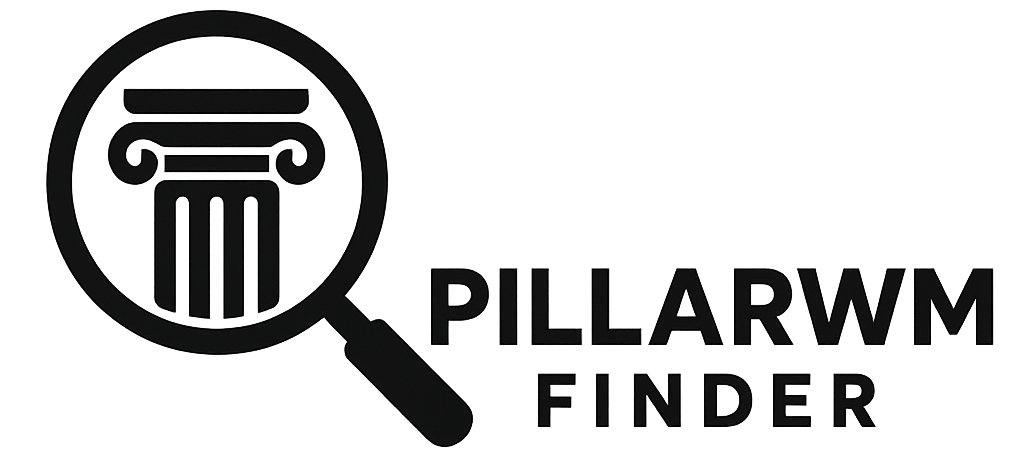
Retirement marks the end of an era and the beginning of a new, exciting chapter. One essential part of the process is writing a retirement letter, which is both a formal document and a personal milestone. This letter communicates your intent to retire, ensures a smooth transition, and leaves a lasting professional impression. But beyond the logistics, it’s a chance to show appreciation, demonstrate professionalism, and set a respectful tone for your departure.
In this guide, you’ll discover 20 actionable tips to help you write an effective and gracious retirement letter. Whether you’re leaving after decades of service or a shorter tenure, these insights will help you get it right.
What Is a Retirement Letter?
A retirement letter is a formal written notice to an employer indicating your intention to retire from your position. It’s more than a simple goodbye; it’s a documented step that initiates the retirement process and outlines key dates and intentions.
There’s a difference between a retirement announcement—which may be shared publicly—and a retirement notice letter, which is typically sent to your manager or Human Resources. The retirement letter is more formal, often required for record-keeping and compliance.
Typically, this letter is addressed to a direct supervisor, manager, or HR department. It serves as an official communication of your retirement date and sets the stage for exit planning, knowledge transfer, and finalizing benefits.
Writing this letter properly is critical to ensure a smooth professional exit and to preserve relationships you’ve built over your career.
When Should You Write a Retirement Letter?
Timing matters. Ideally, a retirement letter should be submitted well in advance—generally two weeks to three months before your planned retirement date, depending on your role and the company’s policies.
If you hold a senior or critical position, more notice may be expected to allow time to train a successor or ensure proper knowledge transfer. Some employment contracts may also stipulate specific notice periods, so review those carefully.
Early notice is not only courteous but also beneficial for both sides. It helps your employer manage internal transitions and gives you time to handle paperwork and benefits. Proper timing reinforces professionalism and sets the tone for a smooth retirement.

Writing the Retirement Letter: 20 Practical Tips
A well-written retirement letter helps ensure a smooth transition while preserving professional relationships. Whether you’re retiring after decades or just a few years, the following 20 practical tips will guide you in crafting a thoughtful and effective retirement letter.
1. Start with a Clear Statement of Intent
Begin with a direct and unambiguous sentence that clearly states your decision to retire. This eliminates confusion and sets the tone for the rest of the letter.
Example:
“I am writing to formally announce my retirement from [Company Name], effective [Retirement Date].”
This clarity ensures your employer and HR team understand the purpose of your message right from the start.
2. Be Professional and Concise
While your tone can be warm, remember that this is a formal communication. Avoid overly casual language, jokes, or long stories. Keep it succinct and focused on the retirement announcement.
3. Include the Exact Retirement Date
Clearly mention your final working day to help the company manage transition logistics like payroll, benefits, and recruitment.
Example:
“My final working day will be Friday, October 31, 2025.”
4. Express Gratitude
Thank the company for the opportunities you’ve had, the professional growth you’ve experienced, and the relationships you’ve built.
Example:
“I am deeply grateful for the support and opportunities I’ve received during my time at [Company Name].”
This fosters goodwill and leaves a lasting positive impression.

5. Keep the Tone Positive
Even if your experience was mixed, focus on the positive aspects. A gracious tone reflects professionalism and maturity, and helps protect your legacy.
6. Offer to Help with the Transition
Show initiative and support by offering to assist with the handover process. This might include training your successor or creating documentation.
Example:
“I would be happy to help train my replacement or provide documentation to ensure a smooth transition.”
7. Acknowledge Key Achievements (if appropriate)
Briefly highlight a few accomplishments, especially if you’ve had a long tenure. This can reinforce your contribution and leave a lasting mark.
Example:
“I take pride in having helped launch the [Project Name] initiative, which continues to support the company’s growth.”
8. Avoid Discussing Future Plans in Detail
It’s okay to briefly mention you’re looking forward to retirement, but don’t go into detail about your travel plans, hobbies, or new ventures unless it’s directly relevant to your exit.
9. Personalize It, but Don’t Get Too Emotional
A touch of reflection is good, especially if you’ve built strong relationships. However, keep the tone professional. Avoid tearful goodbyes or deeply personal anecdotes in the letter.

10. Keep It to One Page
A retirement letter is not the place for a memoir. Stick to essential points and aim for a document that’s concise, readable, and professional.
11. Don’t Use the Letter to Negotiate Benefits
This letter should not include questions or requests about retirement benefits, unused vacation days, or pension payouts. Handle those matters in a separate conversation or written communication with HR.
12. Proofread for Spelling and Grammar
Typos and grammar mistakes can diminish the professionalism of your letter. Review your writing or ask someone you trust to proofread it.
13. Choose the Right Recipient(s)
Generally, your letter should go to your direct supervisor and the Human Resources department. Some companies have specific policies, so double-check your company handbook if needed.
14. Use a Proper Business Letter Format
Follow standard formatting for a business letter: include your name, address, date, recipient’s name and title, a formal greeting, body, closing phrase, and your signature.
Example Closing:
“Sincerely,
[Your Name]”

15. Include a Subject Line (for email versions)
If you’re submitting your letter by email, use a subject line that clearly indicates the purpose.
Example:
“Subject: Retirement Notification – John Smith”
16. Maintain a Copy for Your Records
Keep a personal copy of your signed letter—whether in print or digital format. It may be useful if questions arise in the future about your official notice or exit details.
17. Submit It Both in Writing and Verbally (if possible)
Before submitting your written notice, it’s good etiquette to inform your supervisor verbally—in person or over a video call. This shows respect and gives you a chance to express appreciation face-to-face.
18. Tailor the Letter to Your Role and Tenure
If you’ve been with the company for many years, a more detailed or heartfelt message is appropriate. For shorter tenures, a simple, polite, and to-the-point letter is usually best.
19. Stay Aligned with Company Culture
If your company is formal, maintain that tone. If it’s more laid-back, you can incorporate a slightly relaxed tone—but always keep it courteous and respectful.
20. Follow Up with HR
After submitting your letter, check in with HR to confirm next steps such as:
- Exit interviews
- Final paychecks
- Benefits rollover
- Retirement documentation
- Return of company equipment
Following up shows you’re proactive and helps ensure a clean and professional departure.

Common Mistakes to Avoid When Writing a Retirement Letter
Even the most seasoned professionals can make errors when drafting a retirement letter. Below are some of the most frequent mistakes—along with guidance on how to avoid them to ensure a smooth, professional, and respectful departure.
1. Using an Overly Casual Tone
It’s natural to feel comfortable with your manager or colleagues, especially after years of working together. However, your retirement letter is still an official business communication. Using overly relaxed language, humor, emojis, or informal phrases like “Hey” or “Just a heads-up—I’m peacing out!” can come across as unprofessional and diminish the seriousness of your announcement.
Avoid this by:
Maintaining a courteous and formal tone throughout the letter. Use proper greetings, business letter formatting, and respectful closing remarks. Even in a friendly workplace, a polished tone reflects well on your professionalism and legacy.
2. Forgetting to Include Your Final Working Date
Failing to specify your exact last day can lead to misunderstandings about your departure timeline. This oversight can create logistical issues for HR, including delays in processing final paychecks, retirement benefits, and transition planning.
Avoid this by:
Clearly stating your final working day in the opening paragraph of your letter. For example:
“My final working day will be Friday, December 20, 2025.”
This ensures that everyone—your supervisor, HR, and payroll—has clarity from the outset.
3. Being Too Vague or Overly Detailed
Some retirees provide too little information, while others go into unnecessary detail about their life plans post-retirement. A retirement letter should not be a vague note or a long-winded narrative about your bucket list.
Avoid this by:
Keeping your message brief and focused on the essentials: your intention to retire, your final date of employment, a word of thanks, and any offer to assist with the transition. If you wish to share more about your future plans or feelings, save that for a separate farewell message, personal note, or retirement party speech.
4. Mentioning Unresolved Issues or Complaints
Using a retirement letter as a platform to air grievances or criticize colleagues, management, or company policies is a major misstep. While it may be tempting to “get things off your chest,” doing so in a retirement letter can burn bridges and tarnish your exit.
Avoid this by:
Leaving the letter on a positive, professional note. If you feel that there are workplace issues worth addressing, schedule a private meeting with HR or your supervisor, or submit feedback through appropriate internal channels. Your retirement letter should focus solely on your departure—not on past frustrations.

How to Deliver the Retirement Letter
Once you’ve carefully written your retirement letter, the next step is to deliver it appropriately. The method of delivery can depend on your workplace environment, your relationship with your manager, and whether you work remotely or on-site. Regardless of how you deliver it, the goal is the same: to communicate your retirement professionally, respectfully, and in a way that’s clearly documented.
Here are the most common delivery options, along with best practices for each:
1. In Person
Best for: Traditional workplaces or when you have a close, respectful relationship with your supervisor or leadership team.
Delivering your letter in person adds a personal and professional touch. It gives you the chance to have a sincere conversation, express your gratitude, and discuss the transition in real time. This method often leaves a lasting, positive impression.
Best Practices:
- Schedule a brief meeting in advance—don’t catch your supervisor off guard.
- Bring a printed and signed copy of your retirement letter to hand over during the conversation.
- Keep the meeting professional, appreciative, and solution-oriented if transition planning is discussed.
2. Printed Copy to HR
Best for: Companies with formal HR processes or strict documentation policies.
Providing a signed, dated hard copy to Human Resources ensures your retirement is formally recorded. Many companies require this for official filing, benefits processing, and legal compliance. This method can either accompany in-person delivery to your manager or be your primary method if required by company policy.
Best Practices:
- Use professional business letter formatting.
- Sign and date the letter at the bottom.
- If you’re unsure who to address it to, check your employee handbook or HR guidelines.
3. Email Submission
Best for: Remote or hybrid roles, or companies that rely on digital communication.
If you’re working remotely or in a digital-first company, email is an acceptable—and often preferred—method of submitting your retirement notice. However, just like a printed version, it should remain formal and structured.
Best Practices:
- Use a clear, professional subject line such as:
Subject: Formal Retirement Notice – [Your Full Name] - Include the full letter within the email body or attach it as a signed PDF.
- CC your manager and HR representative to ensure visibility and compliance.
4. Request Acknowledgement and Confirmation
No matter how you deliver your letter, it’s important to confirm that it was received and acknowledged. This protects you in case of any administrative oversights and ensures your retirement process proceeds smoothly.
How to Ensure Acknowledgement:
- Ask for a written confirmation (email or signature) if you deliver it in person or in print.
- Follow up via email if you don’t receive a response within a few business days.
- Politely confirm your notice was logged and ask about next steps, such as your exit timeline, benefits paperwork, or final payroll.

Follow-Up After Sending the Letter
Submitting your retirement letter is a major step—but it’s not the final one. Once your notice is acknowledged and accepted, it’s important to follow up with thoughtful actions that help ensure a smooth transition for both you and your employer. This stage reflects your professionalism and helps you leave on a positive, respectful note.
Below are key follow-up steps to take after your letter is submitted:
1. Schedule an Exit Meeting with HR
Once your retirement notice is received, Human Resources will usually initiate an exit process. Be proactive by requesting a meeting if one hasn’t been scheduled.
During this meeting, you’ll typically cover:
- Final paycheck schedule and payout of any unused leave
- Retirement or pension benefits, 401(k) rollovers, and healthcare continuation (e.g., COBRA)
- Return of company property (e.g., laptop, badge, phone)
- Exit interview to gather feedback on your experience
Tip:
Come prepared with any questions about your benefits or documentation to avoid surprises later.
2. Coordinate a Knowledge Transfer
A smooth handover demonstrates integrity and leadership. Offer to support the transition by sharing your knowledge and helping train your replacement if one has been identified.
Consider preparing:
- A transition document outlining key responsibilities, active projects, and contacts
- Login credentials or system access (as permitted by policy)
- A schedule of handover meetings or one-on-one sessions
Even if you’re not asked to train your successor, organizing your files and providing process notes will be appreciated and remembered.
3. Plan Your Farewell Thoughtfully
Retirement marks the end of a major chapter in your professional life—take the time to close it meaningfully. Depending on your workplace culture, this may involve a retirement celebration, farewell lunch, or personal goodbye notes.
Ideas for a positive farewell:
- Send a brief email to your team or department thanking them for their support and sharing your contact information if desired
- Participate in or help plan a small gathering, whether virtual or in-person
- Write a few personal thank-you messages to colleagues who impacted your journey
Leaving on good terms reinforces your professional reputation and preserves valuable relationships for the future.

Reaffirming the Purpose of a Retirement Letter
A retirement letter is far more than a simple formality or an administrative requirement. At its core, it is a meaningful rite of passage—an opportunity to formally close one chapter of your professional life and step into the next with grace, gratitude, and intention.
Unlike a standard resignation letter, a retirement letter marks the culmination of your career journey. It serves multiple purposes: it notifies your employer of your decision, initiates the transition process, and captures the tone with which you wish to be remembered. Handled thoughtfully, it becomes both a personal reflection and a professional document—striking a balance between formality and warmth.
A well-written retirement letter does the following:
- Ensures operational clarity by clearly stating your retirement date and intentions.
- Facilitates a smooth transition by opening the door to planning, knowledge transfer, and final documentation.
- Preserves relationships by expressing sincere appreciation and maintaining goodwill.
- Cements your professional legacy by reinforcing the maturity, respect, and character with which you end your career.
Retirement isn’t merely an ending—it’s a profound transition into a new phase of life, often filled with reflection, freedom, and fresh possibilities. Your letter should honor that transition, leaving behind a message of professionalism, dignity, and respect.
Take pride in your contributions, and craft a letter that reflects the caliber of your career. Done right, your retirement letter not only communicates your departure—it celebrates everything you’ve built along the way and leaves the door open for continued respect, connection, and positive remembrance.
